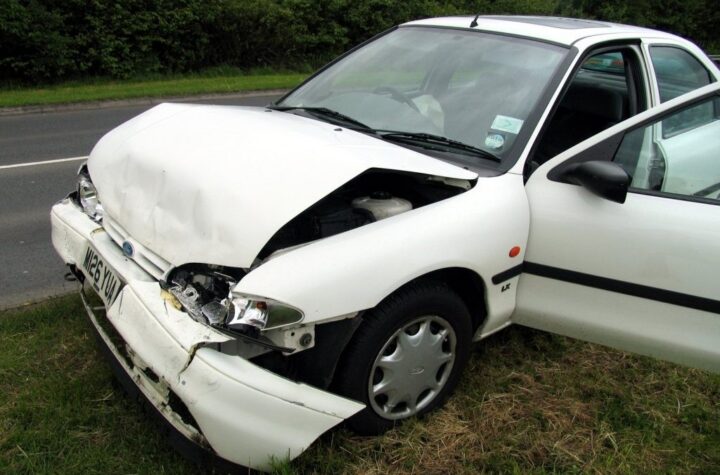
In current and future vehicles, driver assistance functions will complete and extend the feature set of traditional infotainment systems. Along with information features such as navigation systems, traffic information, and function warnings, the number of vehicles with driver assistance functions like camera systems, distance controls, or lane departure warnings will rapidly increas
As Advanced Driver Assistance Systems (ADAS) become an integral part of the car, they will interface with numerous different clusters of electric/electronic systems in the vehicle. Typical emerging driver assistance applications such as Collision Warning, Traffic Sign Monitor, Lane Departure Warning, Advanced Lane Guidance, Pedestrian Warning, Night Vision, Adaptive Cruise Control (ACC), or Pre-Crash Warning all involve the driver as the supervisor. The driver is in the outer loop of each cascaded control structure. Consequently, the most limited and valuable resource – the driver’s attention – needs to be shared by these applications in addition to the normal duties of driving. This will lead to many usability challenges in the future and have a great impact on the automotive infrastructure level. When driver assistance and infotainment systems need to cooperate and become one seamless system, special requirements at the network level have to be met. These are characterized by high integration of a multi-channel network; hard real-time, determinism and low latency; flexible topology; high bandwidth; safety aspects; as well as robustness and maturity. Consequently, a multi-channel network approach with inherent synchronicity will be the first choice. Further advantages such as maturity, cost efficiency and flexible topology are additional arguments for MOST Technology, as it fits best from a system solution perspective.
Multi-Channel Network
MOST. In order to manage the complexity of sensor data, a hierarchical approach with different abstraction levels and timing constraints is chosen. On the lower level there is a large amount of raw data, where high bandwidth and coherent, fast transmission are required. On the medium level, objects and attributes must be transported. Finally, on the highest level, interpretation data flows. A multi-channel network is best suited since it allows the parallel usage of all services for control data, streaming data and packet data through one network. These services are easily synchronized, if necessary, in a highly deterministic way. The third generation of the MOST Specification introduces MOST with 150 Mbit/s. MOST150 enables IP data communication, providing the automotive-ready Ethernet channel according to IEEE 802.3 with freely configurable bandwidth from 0 to nearly 150 Mbit/s. This means MOST is open to a broad variety of IP protocol based applications, including the seamless integration of wireless mobile devices or car-to-car and car-to-infrastructure communication. The MOST Framework, with its function block concept, comprises a clear application programming interface. It is able to standardize both infotainment interfaces and sensor interfaces such as cameras in driver assistance applications.
Synchronicity with High Bandwidth
MOST has been designed as a synchronous network system solution with high bandwidth at almost no overhead for administrative communication. The management of synchronous and isochronous streaming connections allows for an appropriate allocation of resources and thus provides access to quality of service (QoS) communication. QoS IP communication is provided as well. Bandwidth requirements are always increasing. In addition to USB 3.0 and display link applications in driver assistance, there might also be a need for uncompressed video transmission and sensor fusion. MOST Technology is open to future extensions such as high bandwidth: the next generation of MOST will enhance the bandwidth into the Gigabit range. This seems promising for both optical link and coax links, which are both used in today’s telecom standards. Physical Layer Variety and Flexible Topology
The flexibility of the MOST network has already been proven: differing topologies such as star, chain and tree are equally possible, as are diverse physical layers: polymer optical fiber (POF), coax based electric physical layers and shielded or unshielded twisted copper cables (STP/UTP). The MOST150 Specification Rev. 1.0 for the electric physical layer for MOST150 via coax cable has recently been released. This standard extends the existing optical physical layer for MOST150 in the infotainment domain and opens up new possibilities into driver assistance vehicle domains, allowing bi-directional communication and power supply across a single cable. All physical layers are fully compatible.
Tough Requirements: Real-Time and Low Latency Driver assistance systems in a hierarchical approach with sensor fusion applications lead to hard real-time and low latency requirements. Severe jitter restrictions need to be met over an automotive environment temperature range from -40 to 95°C (or even 105°C). For this purpose, the MOST system concept is based on inherent synchronicity on the physical layer level. The specification limits are testable and can be checked during compliance verification.
Safety Considerations
In driver assistance systems, safety aspects have to be examined based on the grade of safety relevance. To meet safety requirements, an adequate safety software layer concept can be added. The counter measures include cyclic redundancy check (CRC), sequence counter, message length, and timeout detection. The feasibility of this concept has already been proven by corresponding studies in cooperation with the German TÜV. MOST150 already fulfills the requirements to the greatest possible extent. For the application there is no difference between a communication partner in the same control unit and one connected across the network. In addition, the network can be combined with “regular” network nodes without a safety layer. MOST Technology is confirmed as robust in over 115 car models on the road today. For the third MOST generation, reference implementations have been realized and MOST150 is rolling out now. The inherent synchronicity on the network level depresses the component level desires and saves resources. The standardization of MOST is based on the reuse of the function blocks, which are sets of standardized commands that allow for synchronized message and event flow. MOST provides an intellectual property pool with royalty-free cross-licensing among the members of the MOST Cooperation. This model and the technology are attractive for both premium and volume carmakers. Established compliance processes with accredited MOST Compliance Test Houses according to ISO 17025 generate pre-tested components. Furthermore, the compliance verification program concludes the design feedback loop and therefore helps to continuously improve the standard.











More Stories
How a Truck Driver Can Avoid Mistakes That Lead to Truck Accidents
Car Crash Types Explained: From Rear-End to Head-On Collisions
Why Buying a Used Car Might Be a Better Option for You